Roof Inspections
Introduction
Roofs are often overlooked when it comes to home maintenance, yet they play a crucial role in protecting our homes from the elements. From shielding us from rain and snow to providing insulation and structural support, roofs endure constant exposure to harsh weather conditions. Without regular inspections, hidden issues can escalate into costly repairs or even compromise the safety and comfort of our living spaces. In this article, we will delve into the importance of roof inspections and provide valuable guidance on conducting thorough assessments to identify potential problems before they worsen. By understanding the significance of roof inspections and implementing proactive maintenance strategies, homeowners can ensure the longevity and integrity of their roofs while safeguarding their most valuable asset—their home.
I’ve provided a list of roof issues that I frequently encounter during home inspections. Below you’ll find some additional information about these issues, including some information about what to do about them. For those of you looking to inspect your own roof, I love the DIY option, however, roofs can be scary, especially steep roofs. If you’re not comfortable getting on your roof, hire a professional. Roof inspections of 7/12 pitch or steeper are tough to walk. Specialized shoes or foam pads can help.
The Importance of Roof Inspections
Your roof serves as a vital shield, guarding your home against a barrage of external elements. Rain, snow, hail, and intense sunlight are no match for its protective prowess. A well-maintained roof acts as a robust barrier, preventing water from seeping into your home and causing extensive damage to walls, ceilings, and possessions. Furthermore, roofs play a critical role in regulating temperature and providing insulation, keeping your living spaces comfortable and energy-efficient. However, even the most resilient roofs are susceptible to wear and tear over time. During inspections, common problems such as damaged or missing shingles, deteriorated flashing, leaks, and clogged gutters often come to light. By proactively identifying and addressing these issues, homeowners can save themselves from costly repairs down the line. Regular roof maintenance is a cost-effective measure that extends the lifespan of your roof and safeguards your home from potential water damage, mold growth, and structural deterioration. Investing time and effort in roof inspections now can save you from significant headaches and expenses in the future.
Key Tips for Effective Roof Inspections for Home Inspectors
- Inspect the roof covering materials for signs of damage, such as missing shingles, curling, or cracks.
- Check for proper flashing installation around chimneys, vents, and skylights.
- Assess the condition of the gutters, looking for clogs or signs of inadequate drainage.
- Examine the attic for signs of water damage, such as mold, stains, or moisture.
- Inspect the roof’s structural components, including trusses, rafters, and sheathing.
Performing A Roof Inspection
Performing a roof inspection requires a systematic approach to thoroughly assess its condition and identify potential issues. Start by conducting an exterior inspection from ground level, examining the overall appearance of the roof and looking for any visible signs of damage, such as missing or damaged shingles, cracked tiles, or sagging areas. Use binoculars to get a closer look at specific sections. Next, carefully access the roof and inspect the materials, paying close attention to the condition of shingles, tiles, or metal panels. Look for signs of wear, curling, or discoloration. Check the flashings around chimneys, vents, and skylights for any signs of damage or deterioration. Don’t forget to inspect gutters and downspouts for debris or clogs that could cause water backup. Inside the house, evaluate the attic or crawl space for signs of leaks, water stains, or mold growth. Check insulation for proper installation and any signs of moisture. Document your findings with notes and photographs, and if any significant issues are discovered, consider consulting a professional roofer for further assessment and repair options.
Roof Inspections from the Interior
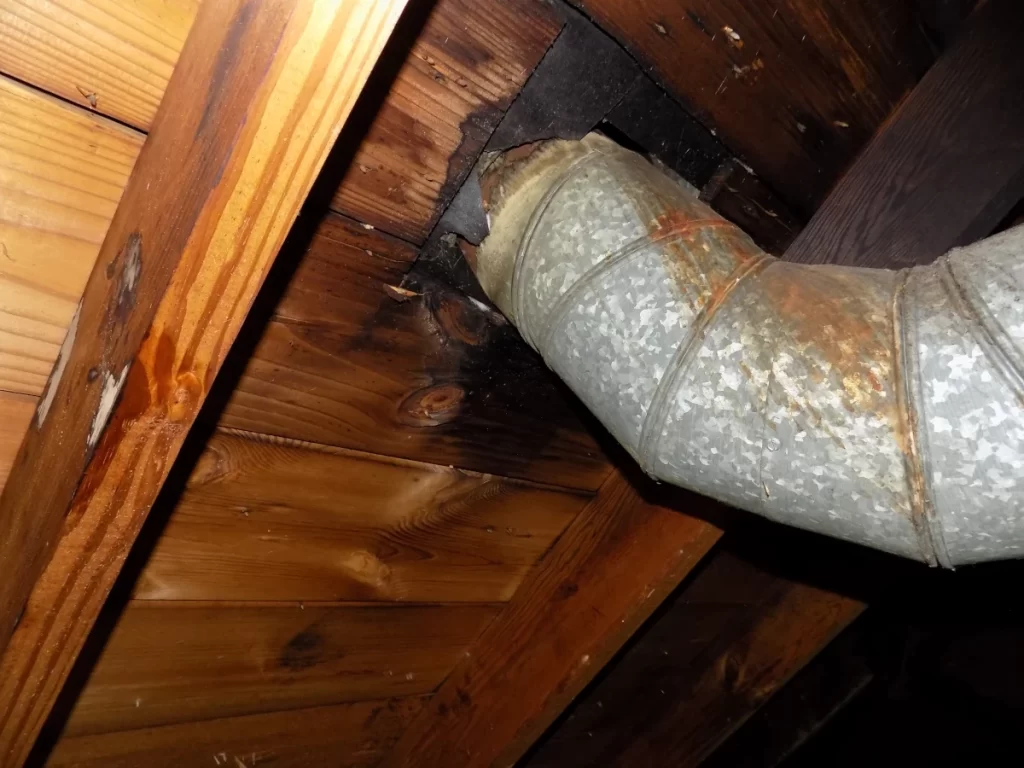
The attic plays a vital role in roof inspections as it provides a unique vantage point to assess the condition of your roof from the inside. Start by ensuring proper lighting in the attic, either by using a flashlight or by opening windows to allow natural light. Carefully navigate through the space, checking for any signs of leaks or water damage. Look for stains on the ceiling, walls, or insulation, as these can indicate a roofing problem. Pay attention to any musty odors or signs of mold growth, which can be indicative of excess moisture infiltration. Inspect the rafters, trusses, and sheathing for any signs of sagging or structural damage. Evaluate the insulation for proper coverage and any signs of compression or water saturation. Take note of any visible daylight penetration, as this could indicate gaps or holes in the roof. By thoroughly examining the attic during a roof inspection, you can uncover hidden issues and address them promptly, ensuring the overall health and integrity of your roof and home.
Evaluate Attic Ventilation and Insulation
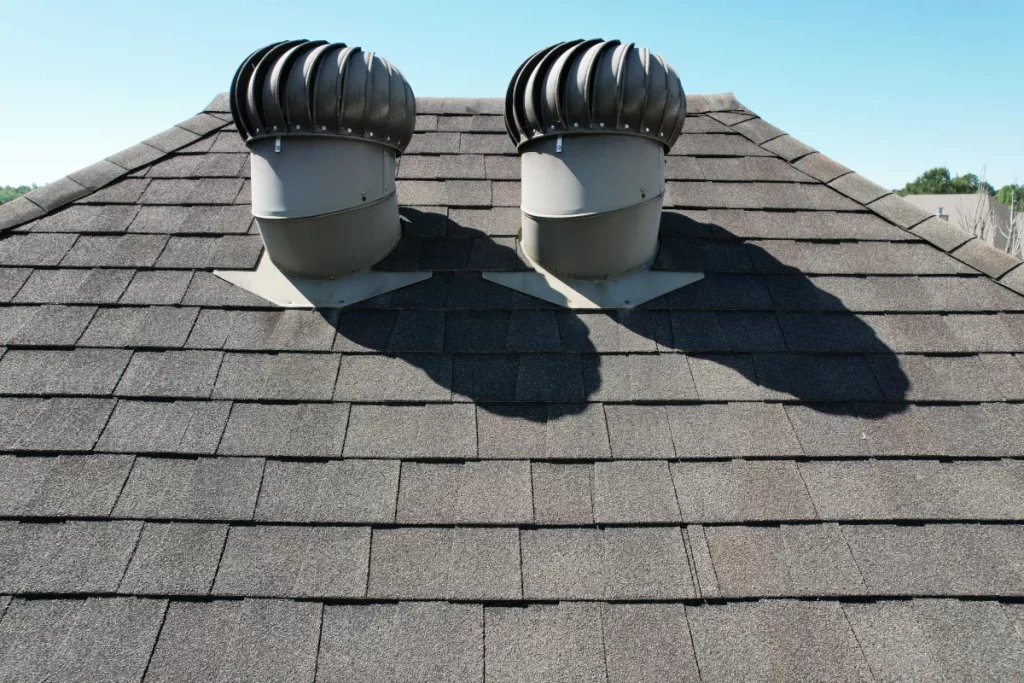
Proper attic ventilation is a critical aspect of maintaining a healthy and functional roof. It serves two main purposes: regulating temperature and controlling moisture levels. Adequate ventilation allows for the exchange of air, preventing heat buildup in the summer and reducing the risk of condensation and moisture-related issues in the winter. Without proper ventilation, excess heat and humidity can accumulate in the attic, leading to a variety of problems such as premature deterioration of roofing materials, increased energy costs, and the formation of mold and mildew. During a roof inspection, it is essential to evaluate the attic ventilation system. Check for the presence of vents, such as ridge vents, soffit vents, gable vents, or powered exhaust fans, and ensure they are clean and unobstructed. If the ventilation system appears inadequate or compromised, it is advisable to consult a roofing professional to make the necessary adjustments or installations. By maintaining proper attic ventilation, homeowners can prolong the lifespan of their roof, promote energy efficiency, and mitigate potential moisture-related problems.
Common Roof Defects
Degranulation
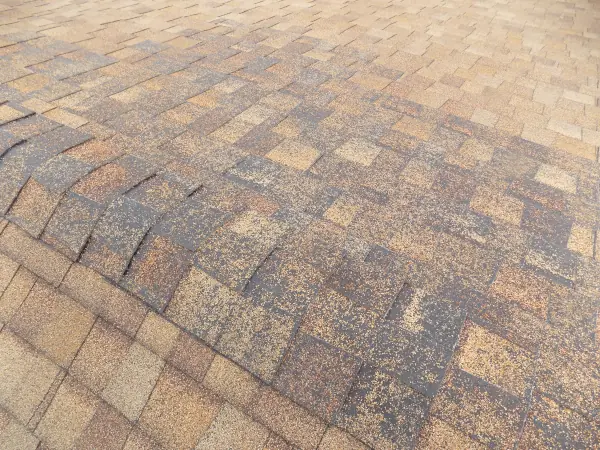
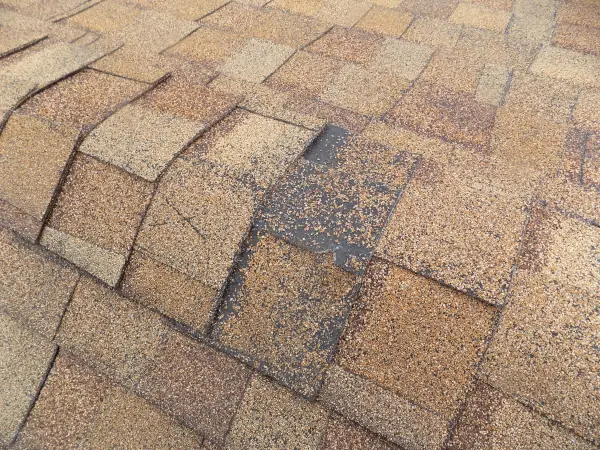
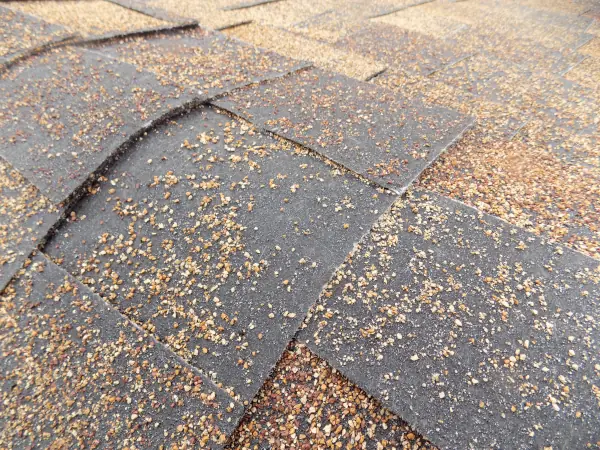
Most shingles have a fiberglass layer coated in asphalt and granules. The granules are similar to sand, but provide color and protect the asphalt from the sun. As a roof ages, it tends to lose these granules. The underlying asphalt becomes exposed and deteriorates, eventually exposing the fiberglass mat and failing to keep water out. Localized patches of degranulation could indicate a manufacturing defect, or result from repair work. If heavy traffic was present in an area, say due to painting, this can result in premature wear on the roof. Uniform granular loss is expected with older roofs.
Vent Boots


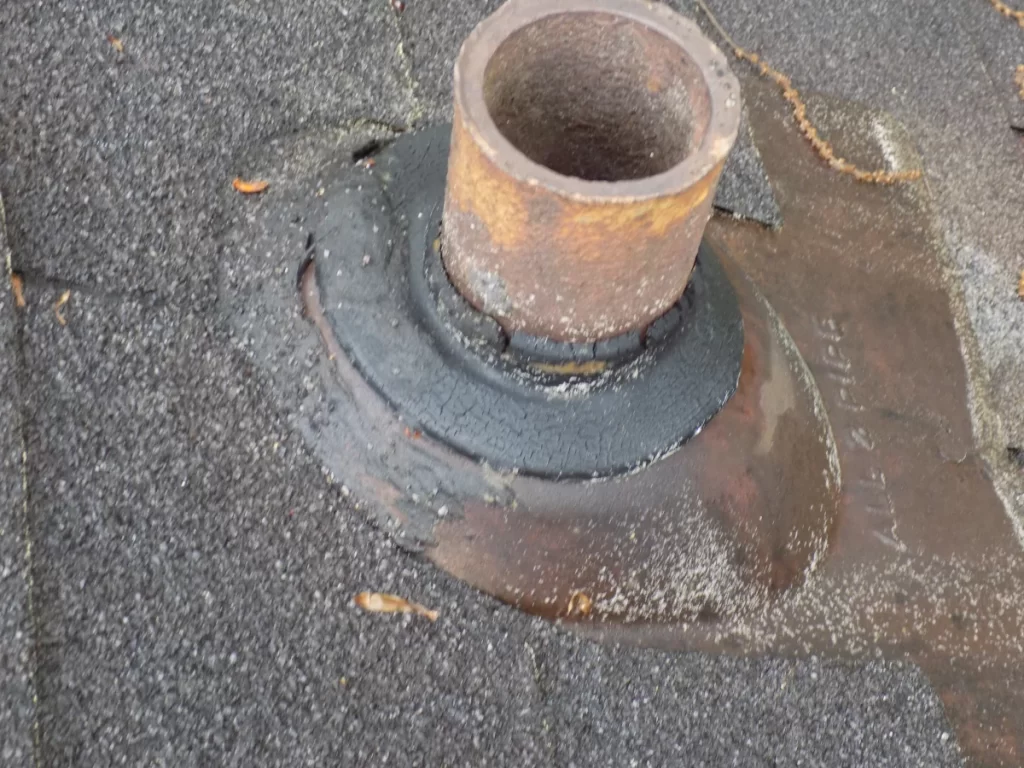
Boots are usually rubber, metal, or lead and allow a pipe to pass through the roof while keeping water out. These boots don’t last forever. Sunlight deteriorates rubber, and amazingly, some squirrels like to chew on the lead boots. Metal flashings tend to rust and develop pinholes. If there are cracks or holes, they’ll need replacing or sealing. Generally it’s best to replace the boot when it fails, but some sealant can be a short term solution. Sealant is generally not needed, and may indicate leaks were or are present.
Exposed Fasteners
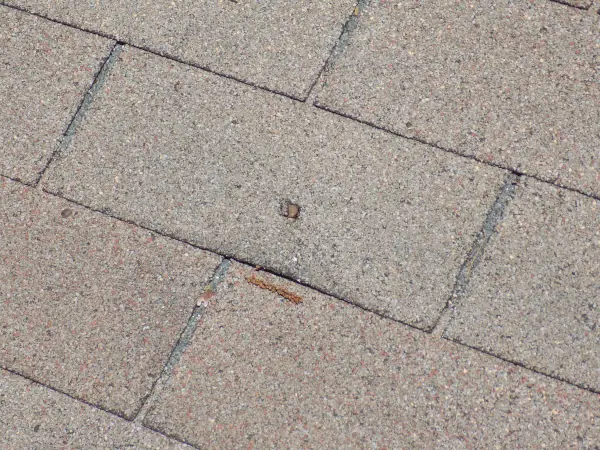
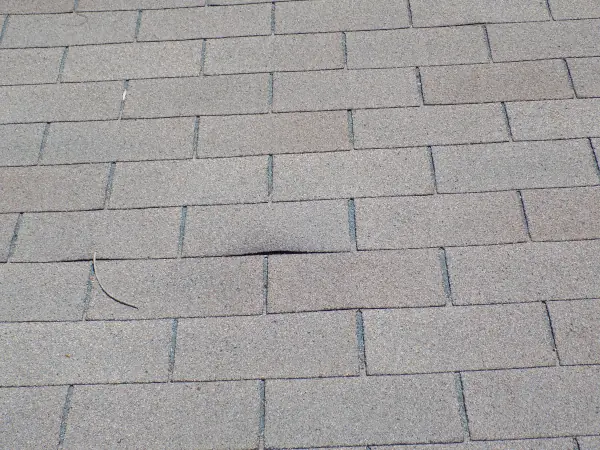
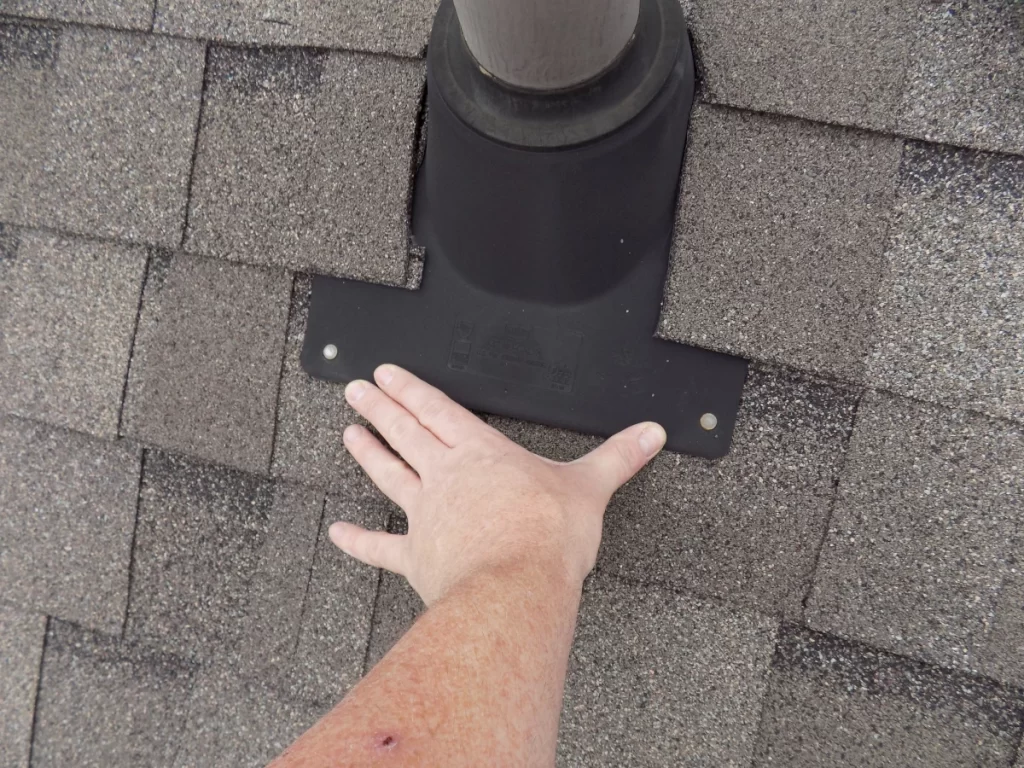
As the structure expands and contracts due to changes in temperature and humidity, nails can start to work themselves out of place. This causes shingles to lift and eventually the nail may pierce through. Fasteners can also be exposed if the installer doesn’t follow the fastening pattern from the manufacturer. Nail pops or other exposed fasteners need to be repaired or they will lead to leaks. Individual shingles may need replacement or sealant applied. Exposed fasteners on boots should have sealant applied.
Damaged Shingles
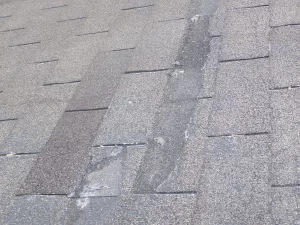
Be on the lookout for damaged shingles. They will need replaced. These were likely damaged by wind.
Missing Kickout Flashing
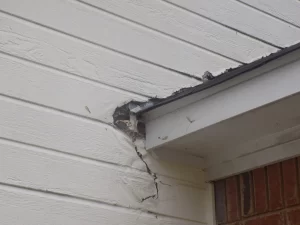
Kickout flashing diverts water out from behind the siding and away from the wall. This is a great example of what can happen over time when it is missing.
Organic Growth
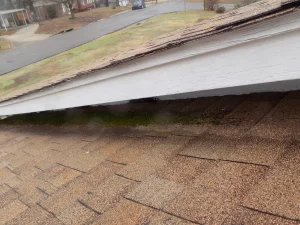
Moss or other growth can feed on the shingle material and damage them over time. Affected areas should be cleaned or the shingles replaced.
Rusty Chase Covers
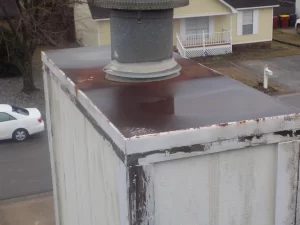
Chimney chase covers are commonly rusted and may develop leaks. These leaks can be concealed well and do significant damage. The cover may be sanded and painted or replaced.
Sagging Sheathing
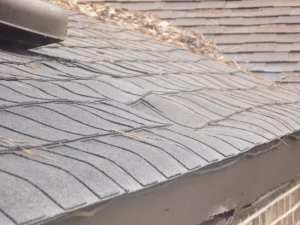
If you see areas of the roof which are uneven, this is a sure sign of water damage. Be careful not to step on these areas, as you could fall through. The underlying sheathing needs repair and the source of the leak needs to be addressed.
Rusted Flashings

Rusted flashings are likely to develop leaks over time.
Conclusion
By following these roof inspection tips, home inspectors can provide valuable insights to clients and help them make informed decisions regarding their potential home purchase. Remember, a thorough roof assessment is a crucial part of a comprehensive home inspection process. If you performed an inspection of your own home, we hope this information helps you to understand the condition of your roof. Please reach out to us if you feel we missed anything or if you have questions!